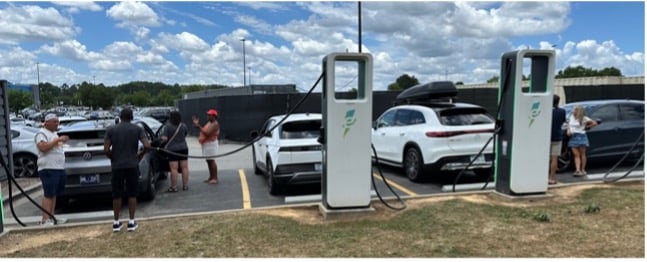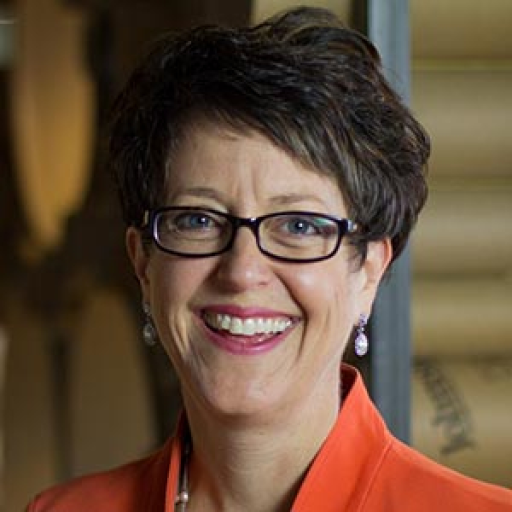Shelton Stat of the Week
36% of people in America state that “running out of charge” is a reason for not buying an electric vehicle (EV). 33% say “the time it takes to charge” is a reason not to buy. – Energy Pulse®, 2023
“I’m not liking this whole EV experience”
- As stated by a woman at a charging station off Interstate 26 in North Carolina on July 3, 2024.
I’ve been writing a lot lately about how we have to make greener products better. While 50% of people in America and 58% of people in the 12 countries we survey annually say that buying and using eco-friendly products is an important part of their personal image, the truth we’ve all learned over two+ decades of sustainability marketing communications is that most of those folks will NOT make trade-offs. When compared to the conventional version, the green product has to:
- Perform as well or better
- Offer a better value
- Be convenient/easy to buy and use
- Be better for people and the planet
EVs have long checked the box of the first and fourth criteria, and recently, they’ve begun to close the gap on the value piece as prices for the vehicles have come down. (Though as you can see from the trending data in our annual Energy Pulse™ survey, we have a lot of work to do to disabuse people of the notion that EVs are more expensive to buy and own.) The biggest issue in my experience—and in our ongoing surveying—is the convenience piece (which are the number 2 and 3 barriers to buying an EV, according to our surveying).
When you’re on a trip and unable to charge at home, charging can be a frustrating, anxiety-producing headache. I wrote about the difficulty I had charging my EV on a family vacation a couple of years ago, and I just repeated the drive to the beach in an EV and found the charging experience hasn’t improved.

I lease my cars so I can be a part of the energy transition in real time. I used to drive a Tesla and found, on the one hand, the charging experience was incredibly easy: you just pull up to a Tesla charging station, plug in your car and it starts charging without any rigmarole of having to log into an app or swipe a credit card (the card is already connected to the car). On the other hand, at least in the Southeast, Tesla charging stations are rarely right off the interstate. So I’ve had to go 10-15 miles out of my way to a random place, like the parking lot of a hotel, where there are no options for food or anything I can take care of while waiting to charge. And since they’re few and far between, there’s often a line.
The non-Tesla charging infrastructure needs to take a page out of the Tesla playbook and make the experience easier (of course, the fact that there are two different charging networks is exasperating). On my recent trip, I had to deal with three different charging companies, one of which was fairly easy (just swipe a credit card like you do for anything else), one of which required downloading an app (which first said it wasn’t available in the U.S.) and tying a credit card to it, and the other required a different app... but the charging station wouldn’t work regardless. The “out of order” thing is a real source of anxiety. At my first charging stop, after I found the app in the U.S., registered, attached a credit card to it and attempted to charge, the charger wouldn’t work. It was the only one for miles around as far as I could tell and I only had about 90 miles of charge left on my car, so, thankfully, I was able to call a 1-800 number and talk to a person who was able to get the charger working remotely. Whew! But who wants that kind of anxiety when you’re just trying to get from point A to point B? And, PS, all of that work added about 20 minutes to my trip on top of the 30 minutes needed to charge.
At another stop, pictured here, there were four charging stations but only two worked and there were three cars in line ahead of me in addition to the two that were charging. This charging stop took 1.25 hours to get through.
I tried to charge at my destination at a charger I could NOT get to work and at another, using one of the apps I’d downloaded. I had to reload the app again and tie my credit card to it again to get it to work. That’s when the lady charging at the one other station next to mine rolled down her window and said, “I’m not liking this whole EV experience.” She also said she didn’t think she’d buy another one. I heard that from my compatriots three-deep-in-the-waiting-line-for-the-two-working-chargers too.
There’s a long-held truth in the marketing world: great marketing kills a bad product. EVs are terrific, but the charging infrastructure is anything but “better.” And “better” is what moves people to buy—and keep buying—greener products.
 View all
View all 